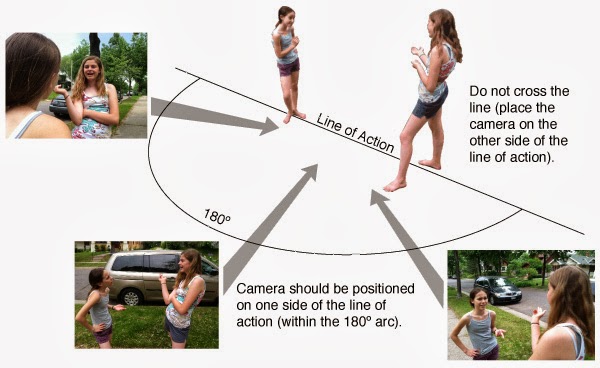180 degree angle rule
The 180 degree rule is a filming guideline that participants in a scene shoud have the same left-right relationship
to each other, with filming only taking place within the 180 degree angle in which this is maintained in a conversation, for example.
For example in king Vidors the big parade (1925) the audiences viewpoint is constantly southward of the action the
American soldiers walk from left to right to the front lines, and right to left when they return home, creating a continuous sense of direction.
This allows the audience to have a greater sense of location in the scene in terms of what may be off-screen in some shots, for example in shot reverse shots.
shot reverse shot
Shot reverse shot is a continuity editing technique used in conversations or simply characters looking at each other or objects.
A shot showing what the character is supposedly looking at (either a point of view or over the shoulder shot) is followed by a reverse angle shot of the character themselves, looking at it, or of the other character looking back at them, for example.
shot reverse shot often ties in with the 180 angle rule to retain continuity by not disorting the audiences sense of location of the characters in the shots.
Match on action
Match on action (or cutting on action) is an editing technique for continuity editing in which one shot cuts to another shot portraying the action of the subject in the first shot.
This creates the impression of a sense of continuity- the action carrying through creates a "visual bridge" which draws the viewers attension away from slight cutting or continuity issues.
this is not a graphic match or match cut, it portrays a continuous sense of the same action rather than matching two separate things.



No comments:
Post a Comment